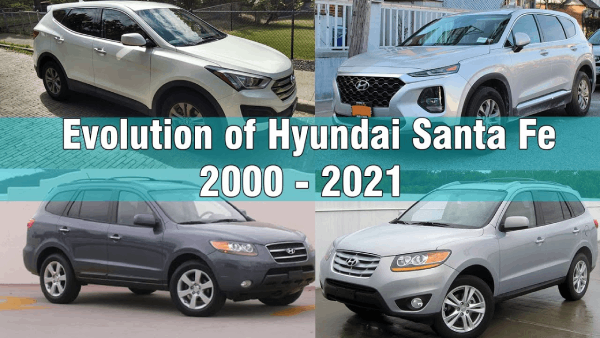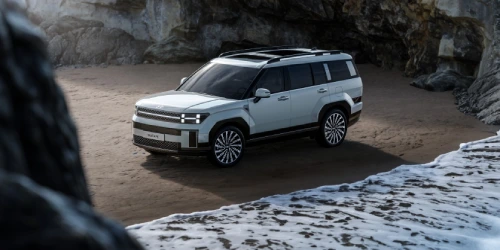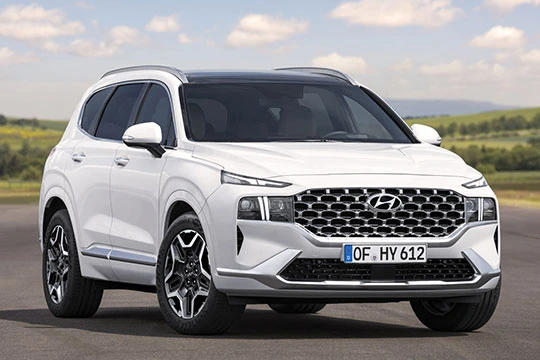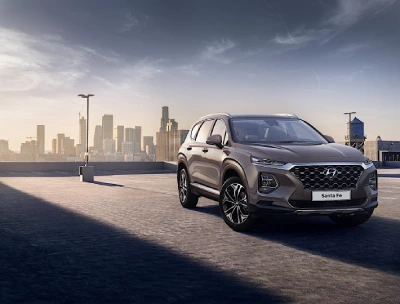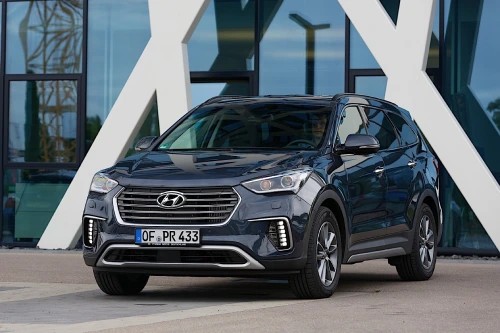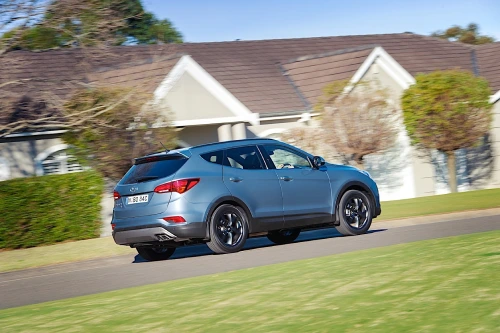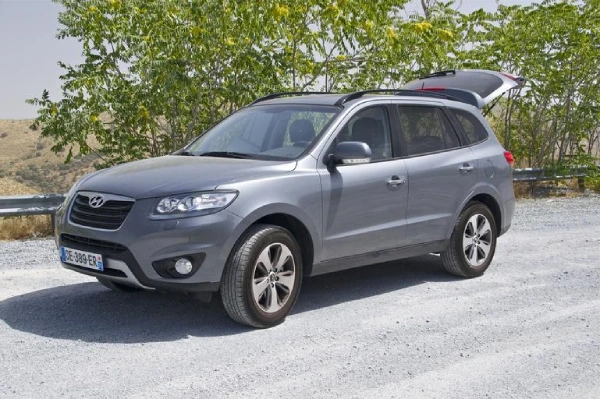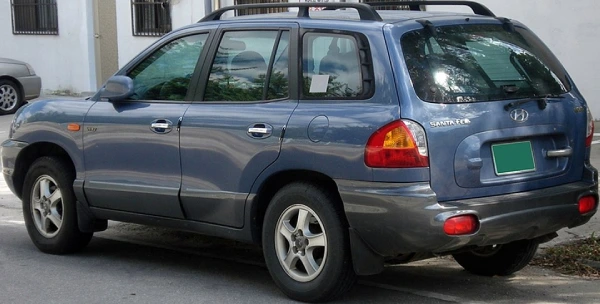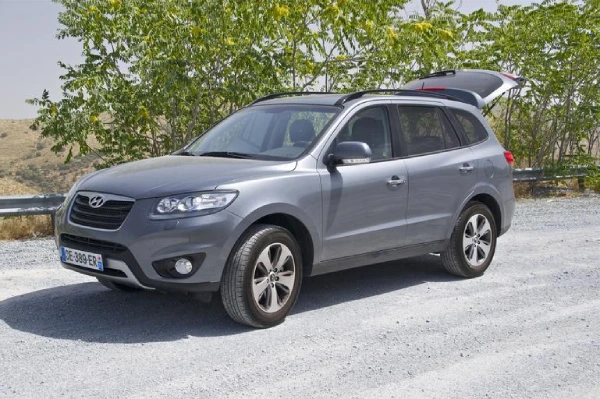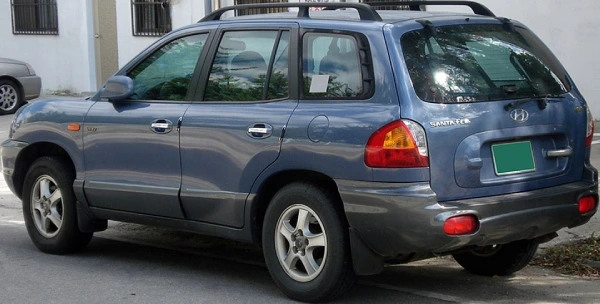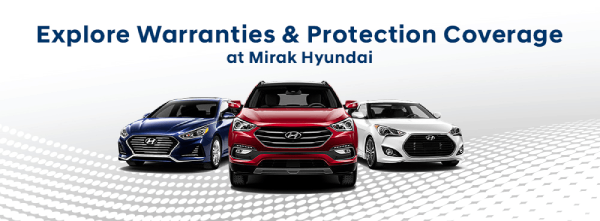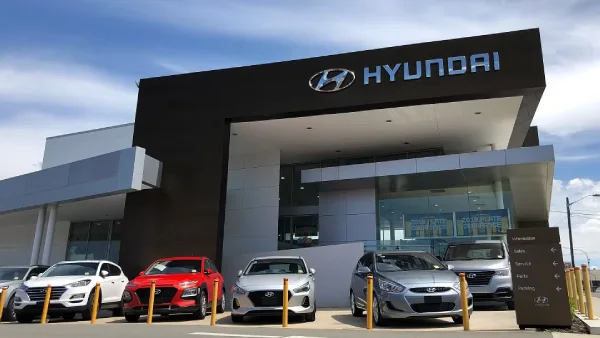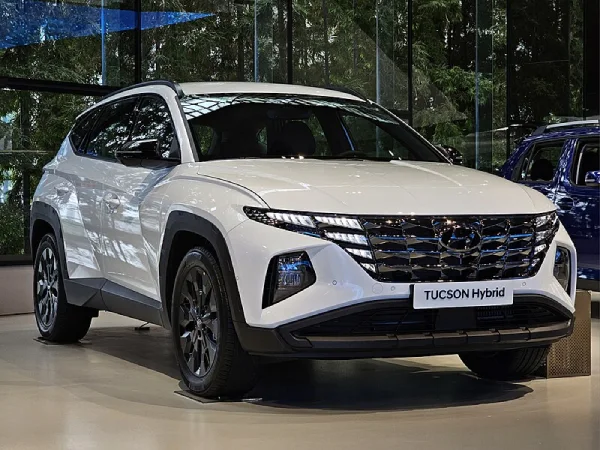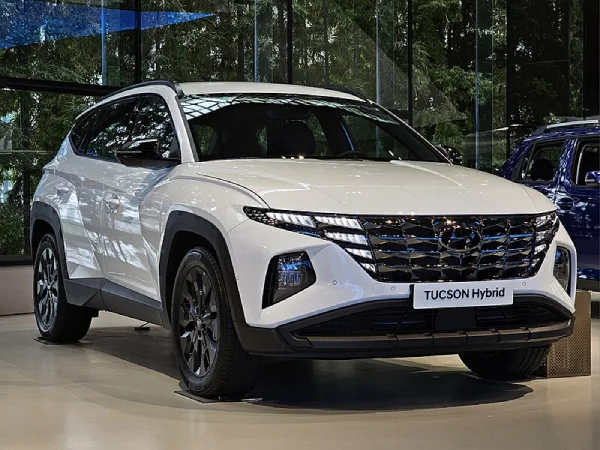
Table of Contents
2025 Hyundai Tucson vs. 2024 Hyundai Santa Fe
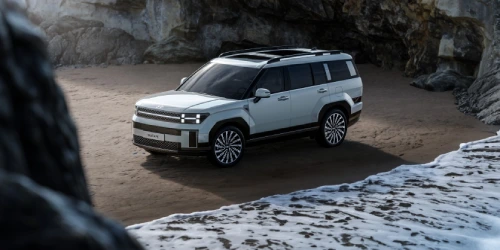
| Feature | 2025 Hyundai Tucson | 2024 Hyundai Santa Fe |
|---|---|---|
| Engine | 2.5L 4-cyl | 2.5L turbocharged 4-cyl |
| Drivetrain | FWD (standard), AWD (available) | FWD (standard), AWD (available) |
| Horsepower | 187 | 277 |
| Torque | 178 lb-ft | 311 lb-ft |
| Maximum Towing Capacity | 2,000 lbs¹ | 3,500 lbs¹ |
| 4,500 lbs¹ (XRT trim) | ||
| EPA-Est. MPG (Cty / Hwy / Comb) | 25 / 33 / 28 (FWD) | 20 / 29 / 24 (FWD) |
| 24 / 30 / 26 (AWD) | 20 / 28 / 23 (AWD) | |
| 19 / 26 / 22 (XRT trim) | ||
| Fuel Tank Capacity | 14.3 gal | 17.7 gal |
Our Hyundai Tucson vs. Santa Fe comparison is the ideal place to start if you’re looking for a new SUV that best fits your expanding family, daily commute, and spirit of adventure. Below, we’ll go over each of these vehicles in detail so you can evaluate their safety features, performance, size, and interior amenities. Get in touch with our Hyundai fans at Barre staff when you’re prepared to see how the three-row Santa Fe and the two-row Tucson handle.
Hyundai Santa Fe vs. Hyundai Tucson: Comparison of Features and Performance
| Feature | 2025 Hyundai Tucson | 2024 Hyundai Santa Fe |
|---|---|---|
| Maximum Seating Capacity | 5 | 7 |
| Passenger Volume | 108.2 cu ft | 152 cu ft |
| Cargo Volume (Behind 1st / 2nd / 3rd Rows) | 80.3 / 41.2 cu ft / no third row | 79.6 / 40.5 / 14.6 cu ft |
| Length | 182.7 in | 190.2 in |
| Body Width | 73.4 in | 74.8 in |
| Height | 65.6 in (FWD) / 66.3 in (AWD) | 67.7 in (SE trim) / 69.7 in (all other trims) |
| Maximum Headroom (1st / 2nd / 3rd Row) | 40.1 / 39.5 in / no third row | 41.1 / 40.6 / 37.7 in |
| Legroom (1st / 2nd / 3rd Row) | 41.4 / 41.3 in / no third row | 44.4 / 42.3 / 30 in |
| Shoulder Room (1st / 2nd / 3rd Row) | 57.6 / 56 in / no third row | 59.5 / 58.1 / 53.5 in |
| Hip Room (1st / 2nd / 3rd Row) | 54.5 / 53.9 in / no third row | 56.5 / 54.9 / 42.7 in |
Examining performance specs will be our first stop in our Hyundai Santa Fe vs. Tucson battle. Although the Santa Fe has turbocharged capability, both versions run well on a 2.5-liter four-cylinder engine. The Hyundai Tucson produces 187 horsepower and 178 pound-feet of torque, while the Santa Fe generates 311 pound-feet of torque and 277 horsepower.
At first glance, the Santa Fe might seem like the superior option because of the power difference, but the Tucson’s lower curb weight allows it to compete effectively. The amount of towing power you require is a more significant factor. For the SE, SEL, and Limited trims, the Santa Fe’s turbocharged engine can tow 3,500 pounds, while the XRT version can tow 4,500 pounds. Across all trim levels, the Tucson can pull up to 2,000 pounds, which is reasonable for its class.
Hyundai Santa Fe Dimensions Compared to Hyundai Tucson
Given that the Hyundai Tucson only has two rows and the Santa Fe has three, it is not surprising that there is a size discrepancy between the two SUVs. The Hyundai Tucson measures 182.7 inches long, while the Santa Fe is 190.2 inches. The Santa Fe has an additional 7.5 inches of room and is also 1.4 inches wider. Both versions provide excellent riding height; the Tucson’s height is 65.6 inches for FWD models and 66.3 inches for AWD vehicles. In contrast, the Santa Fe’s height changes according to trim level, with the base SE model at 67.7 inches tall and other trim levels at 69.7 inches tall.
Now let’s look inside and compare the cargo spaces of the Hyundai Tucson and Santa Fe. Despite being smaller, the Tucson has a somewhat higher maximum load capacity of 80.3 cubic feet. When the second and third rows are folded, the Santa Fe’s maximum load capacity is 79.6 cubic feet, so it’s not far behind.
Santa Fe Interior vs. Hyundai Tucson
As we now know, the Santa Fe has three rows, whereas the Tucson only has two. There are additional differences between the two interiors, but that is the primary one. The Tucson features an auto-dimming rearview mirror earlier than the Santa Fe. However, both vehicles share many standard and available options, including:
- Standard leather upholstery
- Heated and ventilated front seats
- A 12-inch head-up display
- Stain-resistant fabric seating
- Available premium Bose® sound system
- Ambient lighting
Hyundai Santa Fe Tech & Safety vs. Hyundai Tucson
When comparing the Hyundai Tucson vs. Santa Fe, you can expect cutting-edge safety features. The 2024 Hyundai Tucson was a Top Safety Pick+ winner, but the new Hyundai Tucson has not yet received a rating from the IIHS for the 2025 model year. The 2024 Hyundai was named the Top Safety Pick, and the 2024 Tucson has a five-star NHTSA rating, while neither the 2025 Tucson nor the 2024 Santa Fe has received one. You can feel secure and at ease in either vehicle, as both include a plethora of available and standard safety and driver-assistance systems, such as:
- Forward Collision-Avoidance Assist
- Detection of pedestrians, cyclists, and junction turns
- Blind-Spot Collision Warning
- Safe Exit Warning/Assist
- Rear Cross-Traffic Collision-Avoidance Assist
- Parking Distance Warning with Rear Occupant Alert
- Lane Keeping Assist
Visit McGee Hyundai Barre
We hope our comparison of the Hyundai Tucson and Santa Fe was enjoyable. These two SUVs dazzle with their attractive exteriors, powerful engines, and roomy cabins. See the new Hyundai Santa Fe at our dealership when you’re prepared for a three-row vehicle that can handle the upcoming family road trip. Use one of our Hyundai Tucson discounts if you prefer a two-row SUV with an agile frame.
Commonly Asked Questions
What is the primary distinction between the Santa Fe and the Tucson?
These two feature-rich SUVs differ in several ways, but the primary one is that the Hyundai Santa Fe is a three-row SUV, while the 2025 Hyundai Tucson is a two-row SUV. As a result, the Santa Fe is a little wider and longer, providing extra hip, shoulder, leg, and headroom.
What is the difference in size between the 2024 Hyundai Santa Fe and the 2025 Hyundai Tucson?
Overall, the 2024 Hyundai Santa Fe is larger than the 2025 Tucson. The Santa Fe is longer, wider, and can carry more passengers. The Santa Fe has a total cargo capacity of 79.6 cubic feet, while the Hyundai Tucson offers a larger maximum freight volume of 80.3 cubic feet. However, the Santa Fe provides more seating.
In comparison to the Tucson, how many miles per gallon does the Hyundai Santa Fe get?
Depending on the drivetrain you select, the fuel efficiency of either vehicle may vary slightly. The Hyundai Santa Fe achieves an EPA-estimated 20/29/24 MPG (city/highway/combined), whereas the Hyundai Tucson, with standard FWD, offers an EPA-estimated 25/33/28 MPG. These figures may be affected in specific conditions, but two-wheel drive improves handling and traction on uneven surfaces.
